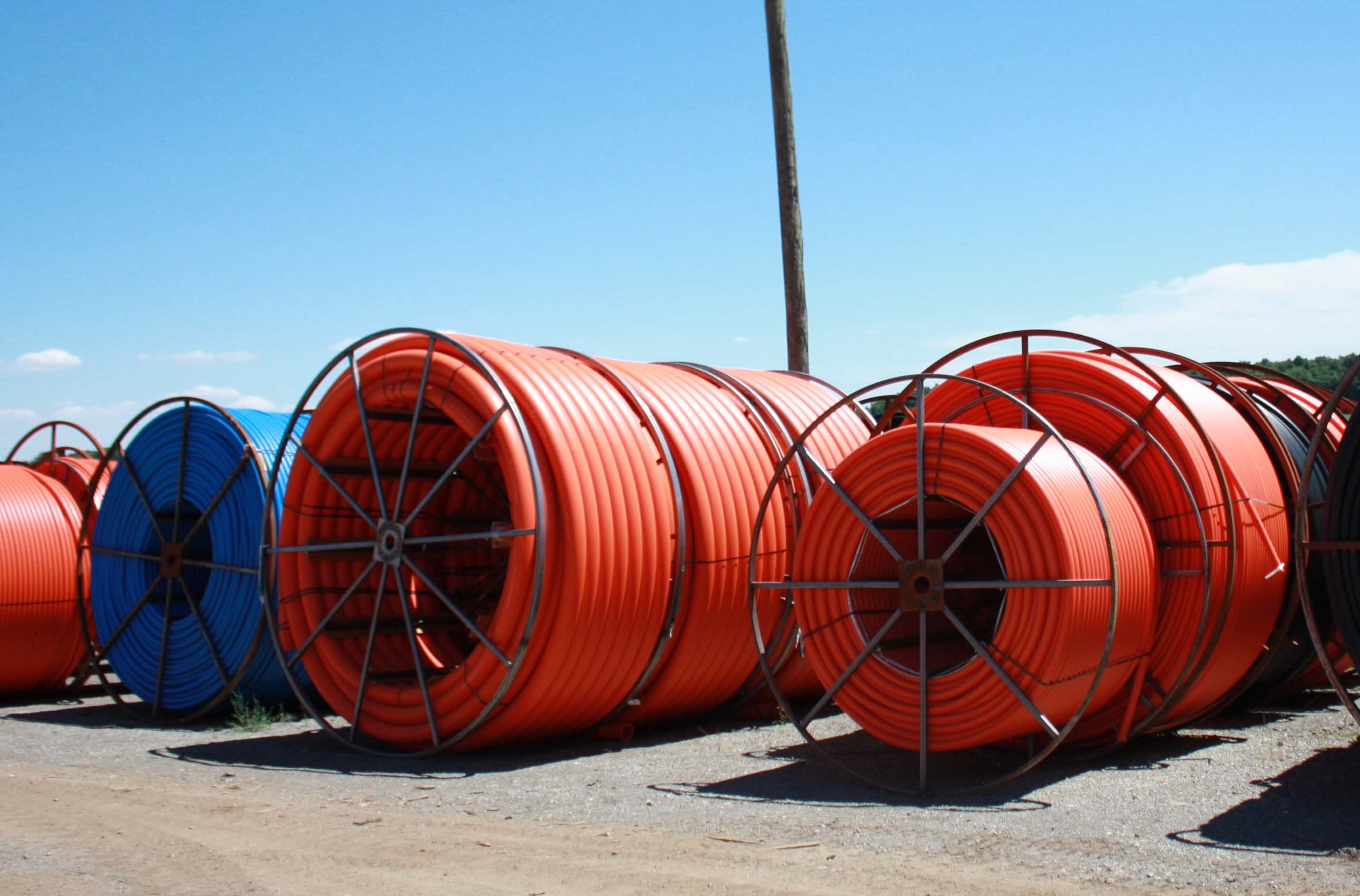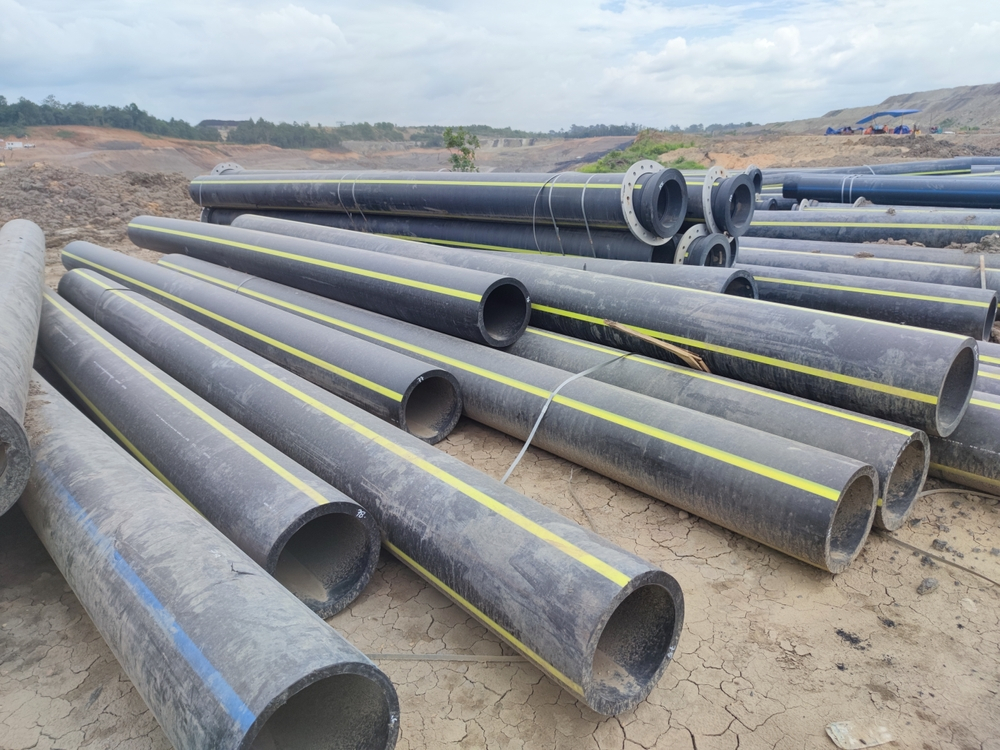Where to Source Midland TX HDPE Pipe Fittings in Stock for Oilfield Success
The Essential Steps for Effective Setup of HDPE Pipe in Your Following Project
Effective setup of HDPE pipe calls for careful planning and execution. Key steps include assessing job demands, preparing the website, and picking correct joining strategies. Each phase plays an essential role in making sure the honesty and performance of the pipeline. Recognizing these important steps can considerably influence the total success of the project - American Plastics HDPE Pipe Manufacturing. Nevertheless, the subtleties of each action might hold the key to getting over typical obstacles dealt with during installment
Recognizing the Perks of HDPE Pipe
High-density polyethylene (HDPE) pipeline supplies numerous advantages that make it a recommended option for various applications. Its high resistance to corrosion and chemicals warranties durability sought after settings, considerably prolonging the life expectancy of installments. Additionally, HDPE's flexibility permits less complicated setup, particularly in tough surfaces, as it can flex without damaging. The light-weight nature of HDPE pipeline streamlines transport and handling, lowering labor prices throughout installment.
Furthermore, HDPE pipeline is known for its low rubbing coefficient, which boosts liquid circulation and decreases power intake. Its seamless building and construction reduces the danger of leaks, adding to much better resource monitoring and environmental security. On top of that, HDPE is recyclable, straightening with lasting methods and minimizing environmental impact. In general, the mix of toughness, versatility, and eco-friendliness makes HDPE pipeline an exceptional choice for a large range of projects, from water circulation to commercial applications.
Planning Your HDPE Pipeline Installment
When intending a setup of HDPE pipe, careful consideration of a number of key factors is crucial to protect a successful job. First, project supervisors must examine the details needs of the pipe, consisting of the meant use, flow prices, and ecological problems. Comprehending these specifications will guide the selection of proper pipeline dimensions and product grade.
Next, timelines ought to be developed, considering procurement routines and any kind of potential delays. Control with neighborhood authorities for licenses and regulatory conformity is likewise important. Additionally, a thorough spending plan needs to be prepared, encompassing all costs related to products, labor, and equipment.
It is essential to engage a certified group experienced in HDPE pipeline installation. Their competence will assist mitigate dangers, assurance adherence to market requirements, and inevitably add to the job's success. Thorough planning lays the foundation for a smooth installment process and long-lasting efficiency of the HDPE piping system.
Preparing the Site for Installment
Proper site prep work is important for the successful installation of HDPE pipeline. Prior to installment begins, the website needs to be thoroughly analyzed to ensure it meets all needed demands. This consists of checking the ground for existing structures, energies, and prospective threats that can restrain the setup process.

Correct elevation and positioning must be developed to maintain a consistent slope for drainage objectives. Appropriate drainage around the installation website is also imperative to stop water accumulation, which can result in complications down the line.
Techniques for Signing Up With HDPE Pipes
Accomplishing a dependable connection in between HDPE pipes is essential for making sure the stability and long life of the setup. Various techniques exist for joining these pipelines, each fit for various project needs. Blend welding is one of the most common methods, making use of warmth to bond the pipeline finishes together, developing a seamless and sturdy connection. This strategy can be further classified right into outlet blend and butt blend, depending on the pipe setups.
Mechanical fittings are one more alternative, employing clamps and threaded adapters to join areas of HDPE pipe. While usually faster to mount, they may require additional upkeep with time. Electrofusion is a specific method that includes using electric current to warm and fuse the pipelines through particularly made fittings, making certain a solid bond. Choosing the ideal joining strategy is crucial, as it directly impacts the general efficiency and dependability of the HDPE piping system in the intended application.
Evaluating and Examination of Installed Pipes
The testing and inspection of installed HDPE pipes are critical to ensuring their capability and longevity. This procedure includes aesthetic inspection methods, pressure screening methods, and leak detection procedures to determine possible problems. By utilizing these approaches, professionals can verify the integrity of the installment before it is placed right into usage.
Visual Inspection Techniques
Utilizing effective aesthetic examination methods is essential for assuring the honesty of set up HDPE pipes. Inspectors should systematically examine all noticeable sections of the pipe to determine any kind of signs of damage, imbalance, or inappropriate setup. Secret indications to evaluate consist of joint integrity, surface area abnormalities, and links. Examiners might use tools such as multiplying glasses or electronic cameras to enhance visibility and detail. It is necessary to look for indicators of ecological tension, such as twisting or too much bending, which could endanger performance. Consistent documentation of findings permits tracking modifications over time and helps overview required fixings. By adhering to well-known visual assessment protocols, job groups can notably lower the risk of future failings and assure lasting integrity of the piping system.
Stress Evaluating Techniques
Visual evaluation serves as a preliminary measure, yet it is not enough by itself to ensure the efficiency of mounted HDPE pipelines. Pressure testing approaches are crucial for ensuring the stability of these systems. Commonly, hydrostatic screening is utilized, where the pipes are filled up with water and subjected to stress levels over the desired operating pressure. This method helps determine weaknesses or prospective leaks. Pneumatically-driven testing can likewise be used, although it lugs higher risks due to the compressibility of air. Regardless of the approach selected, adhering to market criteria and safety methods is essential. After performing stress examinations, comprehensive documentation is essential to validate the results and confirm that the setup satisfies all operational requirements prior to proceeding to the our website following phase of the task.

Drip Discovery Procedures
Just how can one guarantee that installed HDPE pipes are complimentary from leaks? Reliable leakage detection treatments are important to protect the stability of the system. Aesthetic inspections must be done, looking for signs of water build-up or soil disintegration around pipe joints. Following this, pressure testing can validate the system's strength. A common method is the hydrostatic test, where water is introduced under stress, keeping an eye on for declines that show potential leakages. In addition, advanced innovations, such as acoustic sensing units or infrared thermography, can find leaks that may not be noticeable. Routine monitoring and upkeep further add to the longevity of HDPE pipes, ensuring they remain leak-free throughout their functional lifespan. Correct documents of these treatments is vital for compliance and future reference.
Upkeep Tips for Long-Term Efficiency
To ensure the durability of HDPE pipelines, establishing a regular examination routine is essential. This proactive approach permits the early discovery of possible concerns, reducing expensive repair services. Furthermore, carrying out correct cleaning techniques will certainly assist preserve peak performance and stop build-up that can affect functionality.
Routine Inspection Schedule
HDPE pipes are known for their durability and resistance to rust, developing a routine examination routine is essential for guaranteeing their long-term efficiency. Regular inspections assist recognize possible concerns such as leakages, joint honesty, and ecological influences that might impact the pipeline's functionality. It webpage is recommended that inspections occur at the very least biannually, or a lot more frequently in settings with severe problems. Pipe Manufacturing Midland TX. During these analyses, visual checks ought to be performed to detect indicators of wear or damage. Additionally, using technology such as ultrasonic testing can supply further understandings right into the pipeline's problem. By applying a structured evaluation timetable, job managers can proactively address issues, thus prolonging the life-span of HDPE pipelines and maintaining system performance
Correct Cleaning Techniques
Proper cleansing methods play a crucial duty in maintaining the long-term efficiency of HDPE pipelines. Routine cleansing avoids the build-up of particles, debris, and biofilm, which can bring about clogs and lowered circulation performance. Operators should employ techniques such as high-pressure water jetting or foam cleansing to efficiently remove impurities without damaging the pipe surface. It is vital to prevent using extreme chemicals that might deteriorate HDPE product. In addition, arranged upkeep checks need to consist of visual examinations for any kind of indicators of wear or damage. Effectively trained personnel ought to carry out these cleansing click site procedures, making certain conformity with safety and ecological laws. By executing these methods, the lifespan of HDPE pipelines can be considerably expanded, guaranteeing ideal performance throughout their functional life.
Often Asked Concerns
What Are the Environmental Impacts of HDPE Pipeline Manufacturing?
The environmental influences of HDPE pipeline manufacturing consist of greenhouse gas emissions, power usage during manufacturing, potential plastic pollution, and obstacles in recycling. HDPE's longevity and resistance to rust can mitigate some ecological issues.
Just How Does HDPE Pipeline Compare to Various Other Products?

What Devices Are Needed for HDPE Pipeline Installation?
Necessary tools for HDPE pipe installation consist of a blend equipment, pipeline cutters, shovels, determining tape, and safety gear. Appropriate devices assurances effective, risk-free handling and setup, contributing to the project's general success and integrity.
Exist Any Kind Of Particular Regulations for HDPE Pipe Installment?
Specific regulations for HDPE pipe installment differ by region, often governed by neighborhood, state, or federal codes. Conformity with these policies guarantees safety and security, environmental management, and performance, making adherence vital for effective job results.
Can HDPE Pipes Be Recycled After Usage?
Yes, HDPE pipes can be reused after usage. Their polycarbonate nature enables reprocessing, making them ideal for reusing into new items. This sustainability facet adds to ecological conservation and promotes round economic situation practices in building.